XCOM Chimera Squad: Headquarters
This page of the XCOM: Chimera Squad guide includes all the key information about XCOM Headquarters and City 31, where the game's action takes place and which replaces the globe screen from the previous series. You will find out how the strategic map works and what activities can be performed in the headquarters.
Strategy Screen highlights
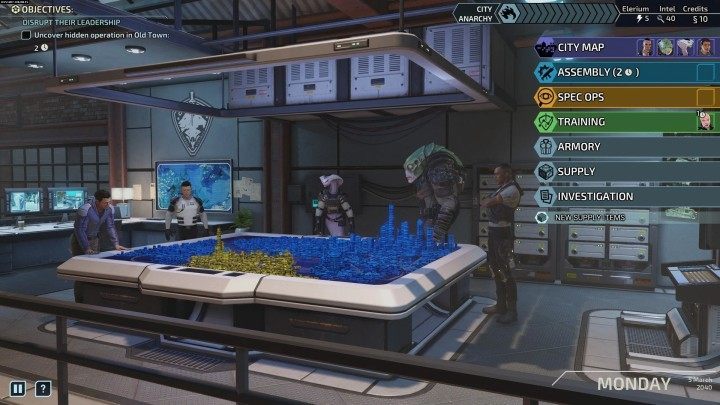
You visit Headquarters in between missions. It is the equivalent of the globe menu from the previous XCOM games. Below you will find a summary of all the tabs in the strategy screen along with their explanation.
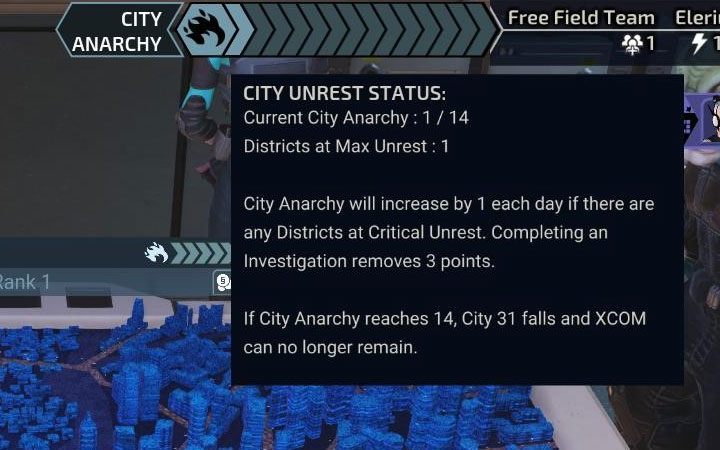
- City Anarchy - this is a very important bar at the top of the screen that informs about the state of the city. . By default, it has 14 fields. The next fields of the anarchy bar can be filled if the Unrest level in any of the districts of City 31 reaches the maximum level (5 points).
Filling that bar means losing the campaign. Your goal throughout the game is to keep it at a low level, among others, by successfully completing the missions, using special skills of the Field Teams and reducing the state of unrest in the city.
For more information on how to reduce the unrest in the city and how to "clear" the anarchy bar, see Anarchy level - how to lower it?.
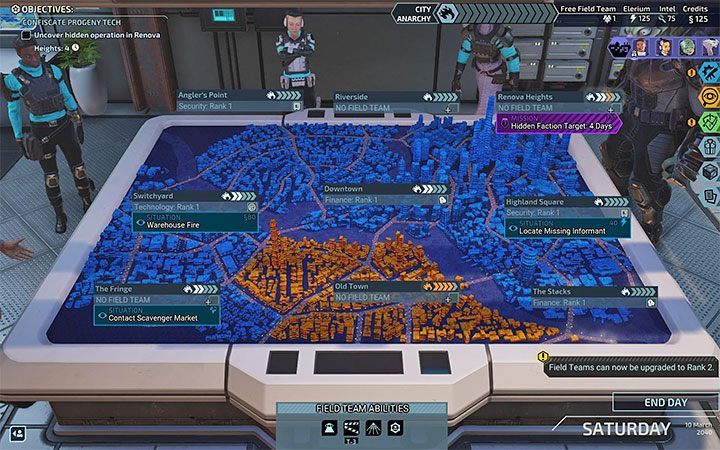
City Map - go to City 31 map. It is divided into 9 districts: Angler's Point, Switchyard, the Fringe, Riverside, Downtown, Old Town, Renova Heights, Highland Square, and the Stacks. You have to take care of and mitigate Unrest in each of them. If unrest reaches the highest 5/5 level in a given district, then City 31's anarchy bar will fill up by 1 point every day.
On the city map, you can choose the main missions (purple color), side missions (yellow color) and situations (blue color). Additionally, you can recruit Field Teams for individual districts. This gives you i.e. the increase in resources and the ability to use special actions on the map screen. For more information, see the Field Teams page.
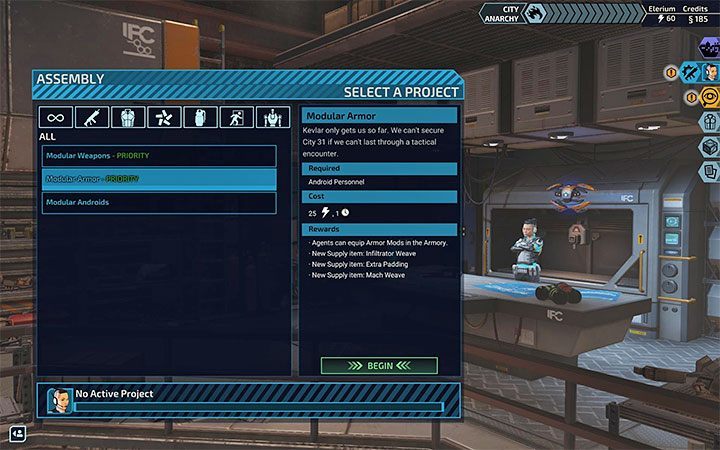
3) Assembly - You can order the development of new technologies which unlocks new equipment or general inventions that will help you during the game. Initially, the list of available research projects is short - it grows as the campaign progresses. Particularly relevant technologies are marked green.
Most research projects require Elerium, one of the resources. In addition, you have to wait a certain number of days to complete the project. Technology development time can be reduced by assigning one of the team members to it.
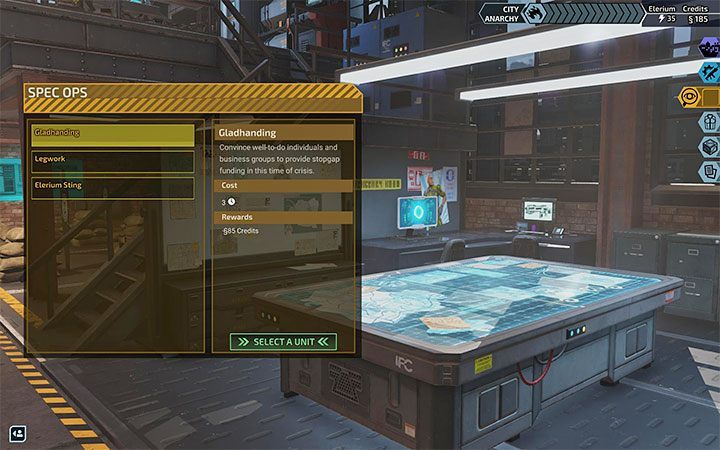
4) Spec Ops - you can assign heroes a variety of Special Tasks. These may include, for example, lowering the Unrest level in one of the city's districts or going out looking for supplies. The list of available operations grows as the game progresses.
A chimera member who has been dispatched to a special task will not be available for a certain number of days, i.e. you will not be able to take them on missions.
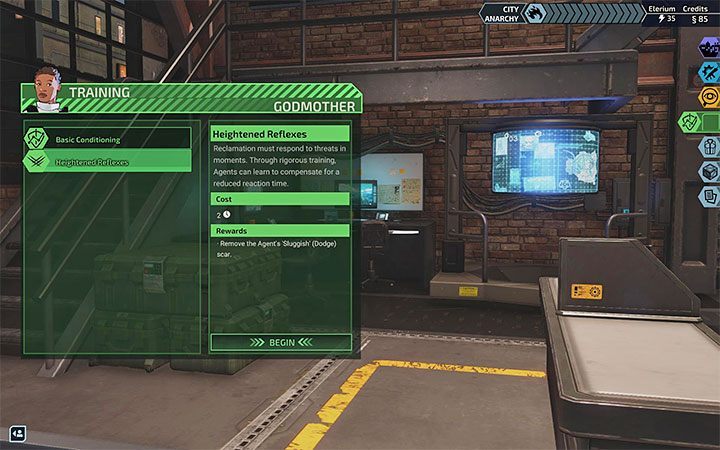
5) Training - you can send team members to training. Their main role is to increase the stats permanently, for example, the number of health points or mobility. Training also helps rid the wounded hero of the scars, whose presence is associated with lowering his stats. Try not to delay this process - you don't want to play a weakened character and make them get more scars that will further reduce their stats.
An agent assigned to training can't go on a mission. You have to wait a certain number of days for them to complete their training.
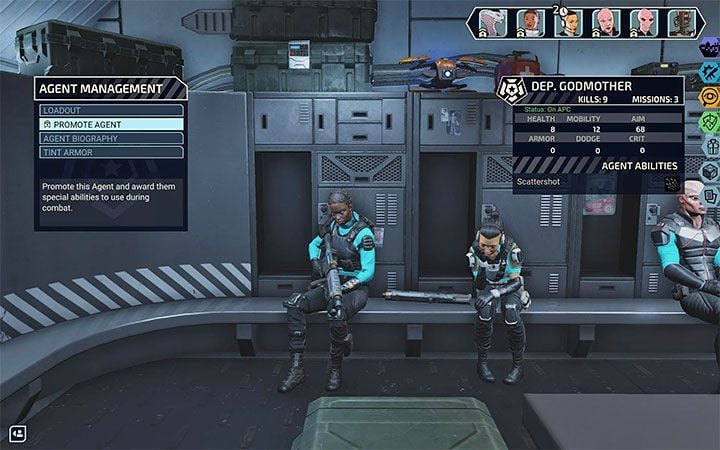
6) Armory - The Armory has two main uses. The most important option is that you can choose the equipment for your agents. Initially, the list is empty - new items must be acquired, e.g. by completing missions or purchased in the Supply/Scavenger tabs.
Another important use of Armory is the ability to promote agents. You can level up agents who have collected enough XP by participating in missions. This allows you to unlock a new skill for each character.
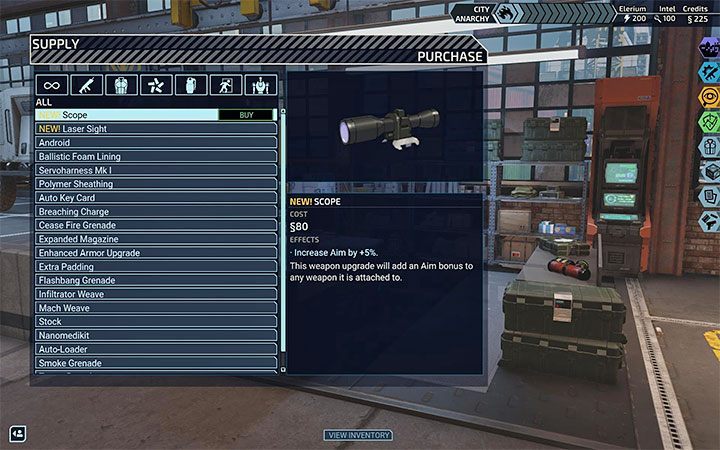
7) Supply - you can visit the supply department. It sells all basic items (grenades, first aid kits, armor, etc.). All goods are bought with credits.
The list of items you can buy is initially quite short. More items will be unlocked by developing the technology in the Assembly menu. The goods are divided into those that can be assigned only to one character (each crafted item) and those that offer an upgrade for all agents (e.g. better armor for the entire Chimera Squad).
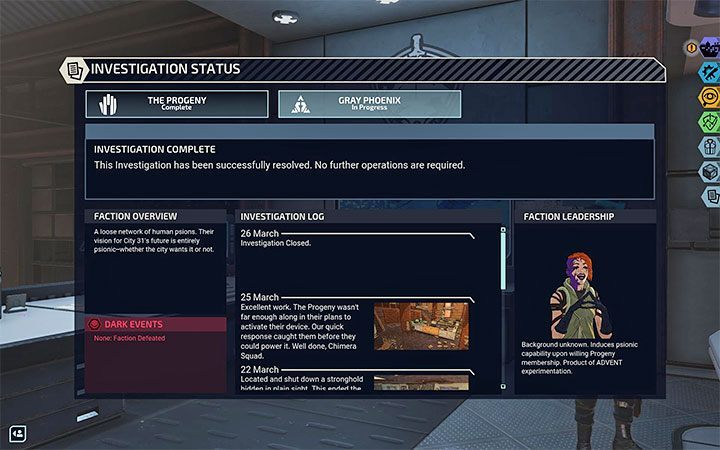
8) Investigation - This menu is virtually devoid of interactive elements. You can visit it only to find out about the current progress in discovering the activities of the three hostile factions. This includes information on current and former major operations, active Dark Events, or the info on the leader of a given group.
For more information, check the Hostile factions chapter.
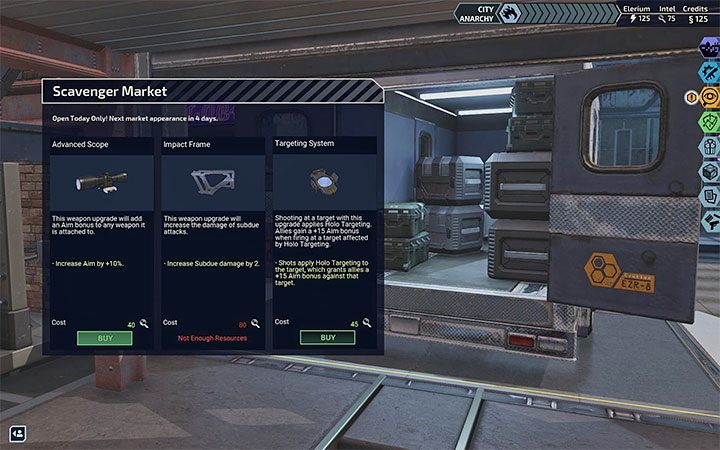
9) Scavenger - You must unlock it first. Also, the market appears on the city map only once every few days - more information about it on Scavenger Market - how to unlock? page.
The market offers unique equipment. You can find e.g. weapon upgrades, armor upgrades, grenades, epic weapons, and Elerium packs. You buy these items with Intel. It's always worth having at least 50-80 Intel points in stock so you don't miss the opportunity to buy some particularly valuable item.
Resources
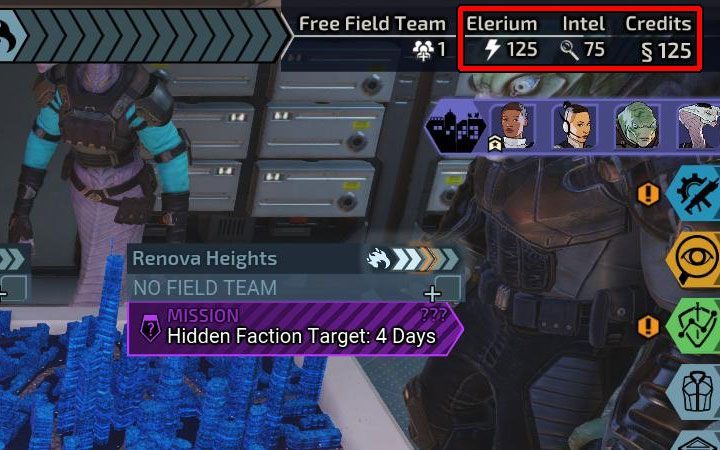
The strategy screen also displays information about the number of resources you have. There are three main types in the game:
- Elerium
- Intel
- Credits
Check the Resources - what are they for? page to learn more about how to get and what to spend the materials on.
Competing missions
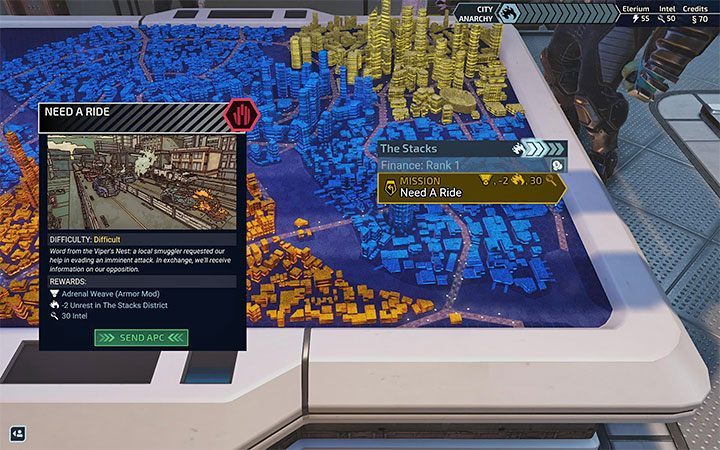
New missions are selected from the city map screen. Here are some important pieces of information about them:
- Story and side missions - taking care of the main tasks (purple) allows you to advance in the campaign. Side missions (yellow) can be performed to get closer to unlocking another important mission or simply to receive associated rewards. Situations are minor events (blue), which are completed automatically upon selecting them - you can get, for example, resources or equipment upgrades.
- Difficulty level - when selecting a mission, you can look at its difficulty level. Completing a difficult mission can be very troublesome, especially for an underdeveloped team.
- Rewards-the rewards for completing missions are displayed at the time of viewing the mission. Upon completing a mission, the player receives rewards such as credits, raw materials, new equipment, unlocking another mission or lowering the level of Unrest in a given neighborhood of a city.
More information about the available missions on Mission types page.
- XCOM Chimera Squad Guide
- XCOM Chimera Squad: Game guide
- XCOM Chimera Squad: Basics
- XCOM Chimera Squad: Turn-based combat guide
- XCOM Chimera Squad: Combat, tips
- XCOM Chimera Squad: Squad members, tips, skills, features
- XCOM Chimera Squad: Team, general tips
- XCOM Chimera Squad: Squad build, team composition - recommended
- XCOM Chimera Squad: Headquarters
- XCOM Chimera Squad: City screen, tips
- XCOM Chimera Squad: Difficulty levels guide
- XCOM Chimera Squad: Campaign guide
- XCOM Chimera Squad: Hostile factions
- XCOM Chimera Squad: User Interface
- XCOM Chimera Squad: Mission types
- XCOM Chimera Squad: Breach Phase, tips
- XCOM Chimera Squad: Field Teams
- XCOM Chimera Squad: Status effects - positive and negative
- XCOM Chimera Squad: Androids, tips
- XCOM Chimera Squad: Best technologies, most useful
- XCOM Chimera Squad: Basics
- XCOM Chimera Squad: Game guide
You are not permitted to copy any image, text or info from this page. This site is not associated with and/or endorsed by the developers and the publishers. All logos and images are copyrighted by their respective owners.
Copyright © 2000 - 2025 Webedia Polska SA for gamepressure.com, unofficial game guides, walkthroughs, secrets, game tips, maps & strategies for top games.
